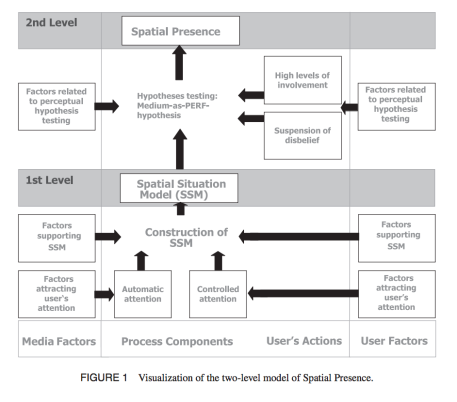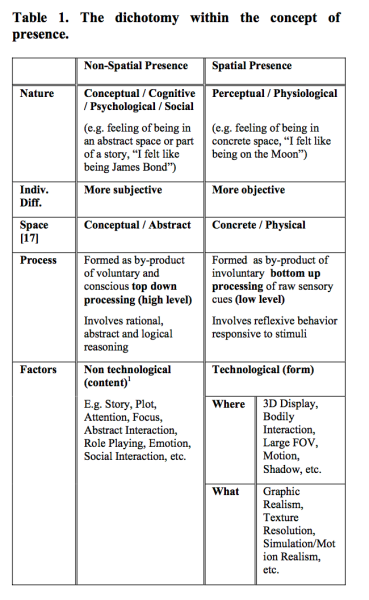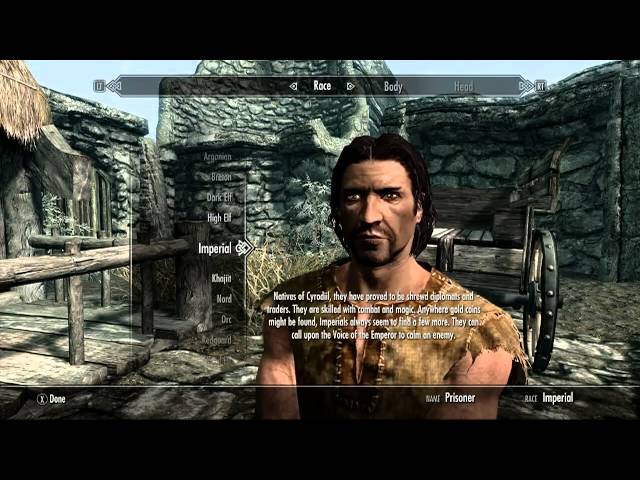The Elder Scrolls V: Skyrim is an open-world role-playing video game developed by Bethesda. Skyrim allows an individual to develop an identity based upon race, sex and characteristics, while immersing themselves inside the fantasy environment. Skyrim is the fifth in the series, with Arena as the first instalment. The series developed its popularity following the release of Morrowind, utilising the Direct3D engine and the application of ‘transforming, clipping and lighting’ computer graphics and pioneering single-player role playing games. The support of The Elder-Scrolls series and Bethesda’s award winning Morrowind and Oblivion allowed for the positive reception of Skyrim with 230,000 Steam players alone on the first day.
The ability for the user to create a representation of oneself or construct a new identity is the key construct of Skyrim. Through personalisation of the product and the immersive nature allows users to transcend beyond their physical presence (Madigan, J. 2010) and develop an identity within the digital environment. This is defined as spatial presence; the occurrence when media produces ‘a sense of being there.’ This arises when an individual’s perception fails to differentiate the role of technology that makes it appear that they are in an artificial environment rather from the actual physical environment. (Wirth et al. 2007).
Wirth demonstrates two steps are required for the experience of spatial presence. With the first step being a mental-model of the mediated circumstances that understands information relative to space and attention allocation all determine the precursor for spatial presence through the Spatial Situation Model (SSM).
- Media Factors: persistence, realism (graphics and environment)
- Process Components: the mediated environment meets the user’s needs and interests.
- User Actions: involvements and beliefs
- User Factors: Motivation

Source
Further inputs of immersion include (Madigan, J. 2010):
- Multiple channels of sensory information
- Completeness of sensory information
- Cognitively demanding environments
- A strong and interesting narrative, plot, or story
According to Lee et al. (2004) we also need to understand the position of the individual and the material as the observer, with presence split into two categories non-spatial and spatial.

Source
This spatial presence is at the centre of Skyrim’s game design. The open-world environment of Skyrim allows for the individual to develop their own narrative, without the constraints of the social constructs. For example the player may decide their character has psychopathic tendencies and engages in guilds such as The Dark Brotherhood (following a narrative revolving assassination and the philosophy of death). This narrative can also reflect users political standing, with some users approaching Skyrim with a pacifist attitude (utilising magic to turn away would be conflicts). However as Robertson, M (2012) notes, as with anything, such approaches require some degree of sacrifice. Thus from the very beginning of Skyrim, in character creation, we touch the underlying economics with each touchpoint constituting an opportunity cost.

Further process components to the immersion is the depth of the lore. The depth of themes produces Skyrim’s true character, providing an intricate framework of politics, flora, social interaction, history and literature and religion. These aspects all interact with another, and influence the economic framework of the game. The first two choices in the game heavily influencing the social and political interactions in the narrative, as choosing a race opens the potential for the player to experience racism and choosing a side in the civil war influences assumptions.
This racism ties in with the political heavy narrative of the rebellion between the Stormcloak’s and The Empire. This rebellion can be categorised into two themes, the Stormcloak’s illustrating protectionist economics and outside influence a ‘threat to the nordic way of life,’ with the Nordic capital of Windhelm split into racial segregation. The Empire’s policies aligning with that of colonialism. This is further enhanced by financial partnership with East Empire Trading Company (EETP)(similar to that of the East India Company 1600 – 1801), and despite being a power in itself, the Empire finances, and protects the EETP. The Emperor also elects the board for the EETP.
As the player progresses through the main narrative and civil war storyline the flow of politics becomes increasingly apparent, with the player facing a choice that influences the geopolitics of the environment, and effectively removing one faction from the game. This choice is known as the ‘Battle for Whiterun’ in which the player (depending on faction siding) either attacks or defends the city. The importance of this city is that it located at the centre of the map, influencing trade routes and thus the economics of the region. We can relate this to the strategic aspect of the Middle East throughout history, with the concept of The Heartland Theory by Mackinder, J. H. illustrating that whoever controls the middle controls the world. In some manner, the Dragons of Skyrim can be correlated to that of Climate Change – only addressed through collaboration and leadership.
Beyond behavioural economics, Skyrim employs an economic system of bartering allowing the player to develop value through trade, however money can still be utilised as a medium of exchange. This is applied allowing for smoother gameplay. Leo, Q. (2016) measures the cost of living measurement through the Fermi Problem:
| Region | Population | Percentage |
| The Rift | 2320 | 17.90% |
| The Reach | 2240 | 17.28% |
| Whiterun | 2100 | 16.20% |
| Haafingar | 1840 | 14.20% |
| Eastmarch | 1780 | 13.73% |
| The Pale | 800 | 6.17% |
| Winterhold | 720 | 5.56% |
| Falkreath | 660 | 5.09% |
| Hjaalmarch | 500 | 3.86% |
Environment by race:
| Race | Unnamed | Named | Total | Percentage |
| Nord | 11081 | 350 | 11431 | 88.20% |
| Imperial | 616 | 65 | 681 | 5.25% |
| Breton | 77 | 68 | 145 | 1.12% |
| Orc | 77 | 48 | 125 | 0.96% |
| Dunmer | 77 | 37 | 114 | 0.88% |
| Redguard | 77 | 29 | 106 | 0.82% |
| Altmer | 77 | 20 | 97 | 0.75% |
| Argonian | 77 | 15 | 92 | 0.71% |
| Bosmer | 77 | 14 | 91 | 0.70% |
| Khajiit | 77 | 2 | 79 | 0.61% |
Farming plays a large role in the economics of Skyrim, however a small percentage of NPCs produce mercenary goods. Leo makes the assumption that such NPCs can be categorised in 20 per cent as metropolis subjects, 70 per cent living in agricultural regions and 10 per cent nomadic. Totalling to 10,368 people live in a household, for a total of 2074 households, and 2952 people live alone or are itinerant (TOTAL: 12,961).
Leo further calculates the annual GDP of Skyrim:
| Demographic | Annual Disposable Income | Annual Gross Income | Gross Income Minus Savings | Number of Households/Individuals | Contribution to GDP |
| Household, City Dwelling | 26,006 | 30,596 | 29,191 | 415 | 12,106,196 |
| Household, Farming | 3,194 | 3,757 | 3,585 | 1,452 | 5,203,540 |
| Household, Itinerant | 22,813 | 26,838 | 25,606 | 207 | 5,309,735 |
| Individual, City Dwelling | 7,756 | 9,125 | 8,706 | 518 | 4,513,275 |
| Individual, Farming | 3,194 | 3,757 | 3,585 | 1,814 | 6,504,425 |
| Individual, Itinerant | 4,563 | 5,368 | 5,121 | 259 | 1,327,434 |
| Total | 34,964,604 |
*Leo further measures the cost of living, annual personal consumption of NPCs and the housing market. However for sake of length you can read more here.
All these factors from economics (Process Components), graphics (Media Factors) to the ability to name and design your character as you wish (User Actions) determine the above Spatial Presence and all constitute to a holistic idea of immersion through an in-depth environment, allowing an individual to transcend physical space to model an ideal-reality.
Skyrim is designed by Bethesda Game Studios and distributed by Bethesda Softworks. Shipping over seven million copies within the first week, and sold over 30 million across all platforms. Skyrim is distributed through third party retailers such as EB Games, JB Hi Fi and Amazon. However due to modding capabilities one of Skyrim’s primary distribution channels is Steam (Valve Corporation). Steam allows for users to install the game and provide automatic updates and is the largest digital distribution platform for PC gaming, with over 70 per cent of market share in 2013. Bethesda has also developed the Fallout Series, applying the politics, economics and open-world environment to a post-apocalyptic theme.
Reblogged this on Digital Game Cultures.
LikeLike
This article made for fascinating reading, as an anthropologist I would also find it extremely interesting to examine the cultural dynamics within the Elder Scrolls lore. Anyway great article, thanks for sharing 🙂
LikeLike